As I was busy helping during the field trip, I didn't take a lot of photos. But I did learn a lot from Dr. Reimer. He taught the whole team well enough that most of us could tell the differences at least down to genus after a couple of trips.
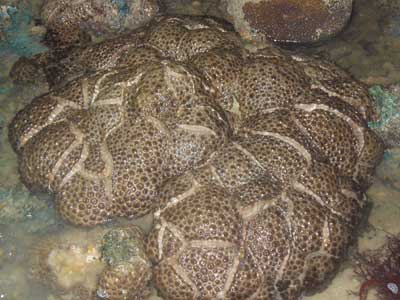
Easiest to identify. Being a distinct mat-like, these are Palythoa tuberculosa. Can't miss it.
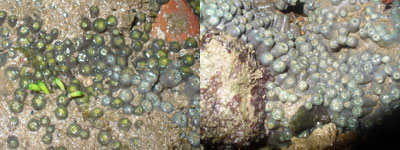
These are probably Zoanthus vietnamensis. They often come in what Dr. Reimer calls 'Hello Kitty Pink' or 'Mint Green'. Zoanthus may be identified by a stripe across the oral disc which can be seen sometimes even when the polyp is closed. Zoanthus have smooth columns as they do not incorporate sand particles inside their body.
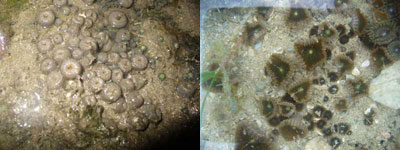
These are Palythoa mutuki, another species in the same genus as Palythoa tuberculosa. If you feel Palythoa's column, they are rather grainy as this genus incorporates sand, unlike Zooanthus as mentioned above. Furthermore, P. mutuki has larger polyps than Zoanthus, with a noticeable white (usually) radial stripe that ends off with a bump (which can be usually seen when polyp is closed).
The smaller polyps (right) among the P. mutuki are actually Zoanthus sansibaricus. Compared to Z. vietnamesis, these have smaller polyps. More often than not, they are hard to distinguish. Hehe...
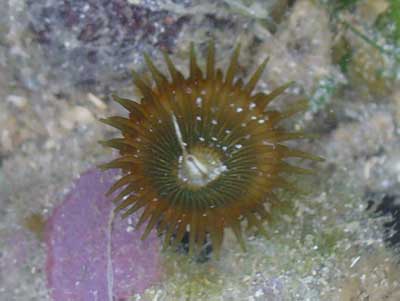
Here's an extended polyp of P. mutuki.
According to Dr. Reimer, there should be at least 6 species, and up to 12 species of zoanthids in Singapore. Z. vientnamensis, Z. sansibaricus and P. mutuki was found on all four shores we been. However, P. tuberculosa was not found only in Changi. There were also a couple of interesting finds, so we shall await good news from Dr. Reimer.
Well, for more on the zooanthid trips, visit the following links of wildfilm blog:
Kusu
Hantu
Changi
Cyrene

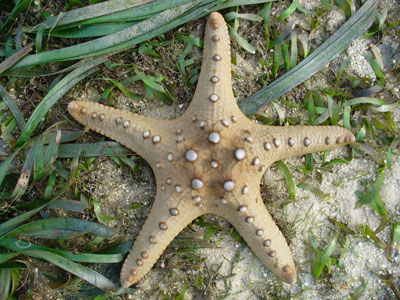




No comments:
Post a Comment